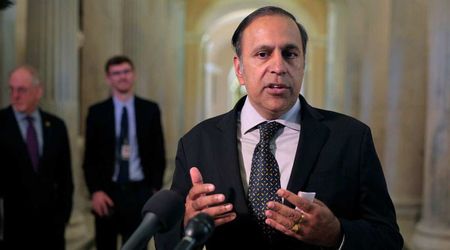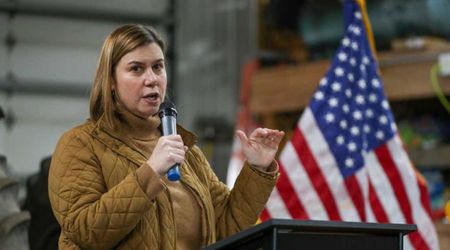California enforces permanent water restrictions on residents as urgent solution to promote conservation

SALINAS, CALIFORNIA: California has made history by implementing permanent water restrictions for its cities and towns.
This measure aims to tackle the pressing challenges of water conservation and enhance resilience in the drought-prone state.

New legislation does not impose direct restrictions on individual households
The California State Water Resources Control Board (SWRCB) approved a groundbreaking regulation on July 3, mandating the state's largest water utilities to reduce their water supply over the next 15 years.
The regulation is prompted by legislation signed by former Governor Jerry Brown in 2018 that sets new statewide standards aimed at promoting water conservation.
This regulation will apply to 405 urban suppliers which affects utilities serving 95 percent of California residents and does not impose direct restrictions on individual households or residents.
In the past, the board has implemented temporary water conservation measures during drought emergencies.
However, this marks the first instance of California adopting permanent water-saving measures.
The new approach aims to have suppliers consistently conserve water, reducing the urgency to implement emergency measures during droughts.
According to the SWRCB, this initiative will help "make conservation a California way of life."
Why does California need to conserve water?
California, which has endured two significant droughts in the past decade and anticipates a 10 percent water supply shortfall by 2040 due to increasingly hot and dry conditions, urgently needs a solution to conserve water.
The new regulation, set to take effect by January 1, 2025, requires water suppliers to develop water budgets tailored to the needs of each community.
These budgets will consider several factors: residential indoor water use, residential outdoor water use, commercial, industrial, and institutional landscapes with dedicated irrigation meters, and the maximum allowable volume of water loss due to leakage.

The combined water budgets, known as the "water use objective," are the targets that urban retail water suppliers must meet, as outlined by the SWRCB. Suppliers are required to reduce water delivery by nearly 40 percent; failure to do so could result in fines of up to $10,000 per day.
To achieve these reductions, suppliers can impose restrictions on consumers, raise rates to incentivize conservation or promote the use of low-flow appliances.
This regulation, alongside existing water-saving efforts, is expected to save about 500,000 acre-feet of water annually by 2040—enough to supply over 1.4 million households for a year, according to The Hill.
The regulation now awaits official adoption by the state Office of Administrative Law.
Which areas in California will experience water supply cuts?
The extent of water supply cuts will vary across California. The Bay Area, known for its historically lower water usage, will experience minimal reductions.
For example, Salinas' California Water Service Company is required to cut supplies by only 1 percent by 2040, according to Desert Sun.
In contrast, the Desert Water Agency in Palm Springs will face a substantial reduction of 32 percent by 2040.
The city of Redding is projected to endure the most significant cuts, with a 21 percent reduction by 2025 and a 39 percent reduction by 2040.
"Today is an exciting and historic moment for California because we have now formalized water conservation as a way of life," remarked Joaquin Esquivel, Chair of the SWRCB, in a press release.
"We've done this by building on lessons learned from drought and extensive input from water systems, customers and the public. The result balances saving water with making sure that suppliers have the flexibility they need to tailor their conservation strategies to local needs and climate."










